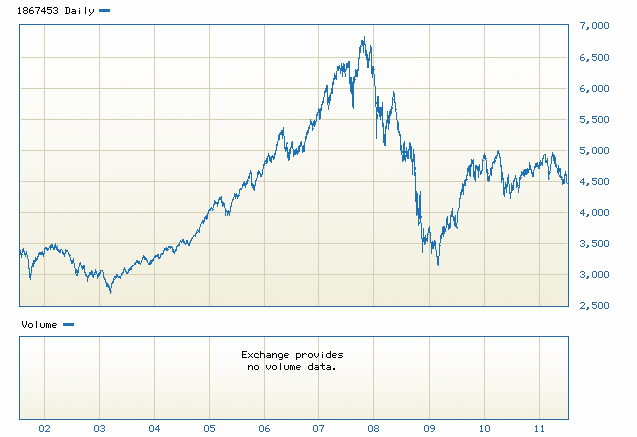A report by Deutsche Bank today suggests that the two speed economy may not be being effectively priced in. The comparing with last financial year means it is not a long term comparison so of limited utility, but it may point to institutional trading strategies in the shorter term.
Compared to their FY11 average, the resource sector PE is currently at an 8% discount, banks at 11%, but industrials are only at a 6% discount. We think this is unjustified, as industrials have had a worse track record of earnings downgrades over the past year or two. Both FY10 and FY11 had been expected to deliver low teens eps growth for industrials, only to be revised down to essentially no growth.
The Deutsche report is, unsurprisingly, predicting downgrades with industrials, which is hardly a surprise:
Industrials likely to see downgrades to FY12F earnings
Consensus expects industrials EPS growth of 17% in FY12. We see this as (at least partly) a ‘default’ forecast. Earnings recoveries typically follow downturns, and as earnings have not grown in 3 years, analysts have assumed a recovery for
FY12. But with a range of headwinds remaining, and potentially intensifying, a recovery may remain elusive. Thus, the risk is that companies deliver cautious commentary in August reporting and that analysts pare back FY12F earnings.
A range of headwinds ahead for industrials
• Overall consumer sentiment has fallen to below-average levels. More concerning is the ongoing slide of households’ perceptions of their own finances, to reach recessionary levels.
• While much discussed, engineering construction has only recently begun to ramp up. Given a record pipeline of work, activity is set to accelerate in FY12 and FY13, potentially crowding out other sectors.
• With inflation around average at present, stronger capex is likely to raise upside risks, keeping the RBA with a tightening bias.
• If rate markets begin to price RBA hikes rather than cuts, the AUD could see upside from already high levels. This would squeeze not only USD-exposed
stocks, but have second-round effects on domestic cyclicals.
It’s all pretty much statements of the obvious, with the implication that the market is going to be increasingly skewed to resources. Hard to argue with that:
Resources earnings growth to continue. O/W resources, U/W industrials. Resources have delivered solid earnings growth, and the past week has brought signs of Chinese inflation peaking, and growth holding up. FX and commodity markets seem to be priced for good growth in China, and equities should begin to catch up. We stay O/W resources, O/W banks and U/W industrials (and amongst industrials, we favour resource capex plays and defensives – WOR, NWH, TSE, ABC, WOW, AGK, AMC, WES).
The question, as always, is how much has the obvious been priced in? This report implies that the pricing of industrials may be a little off, but that does not necessarily mean it is accurate with resources stocks. It is very much a case of individual stock picking rather than more general allocations.
